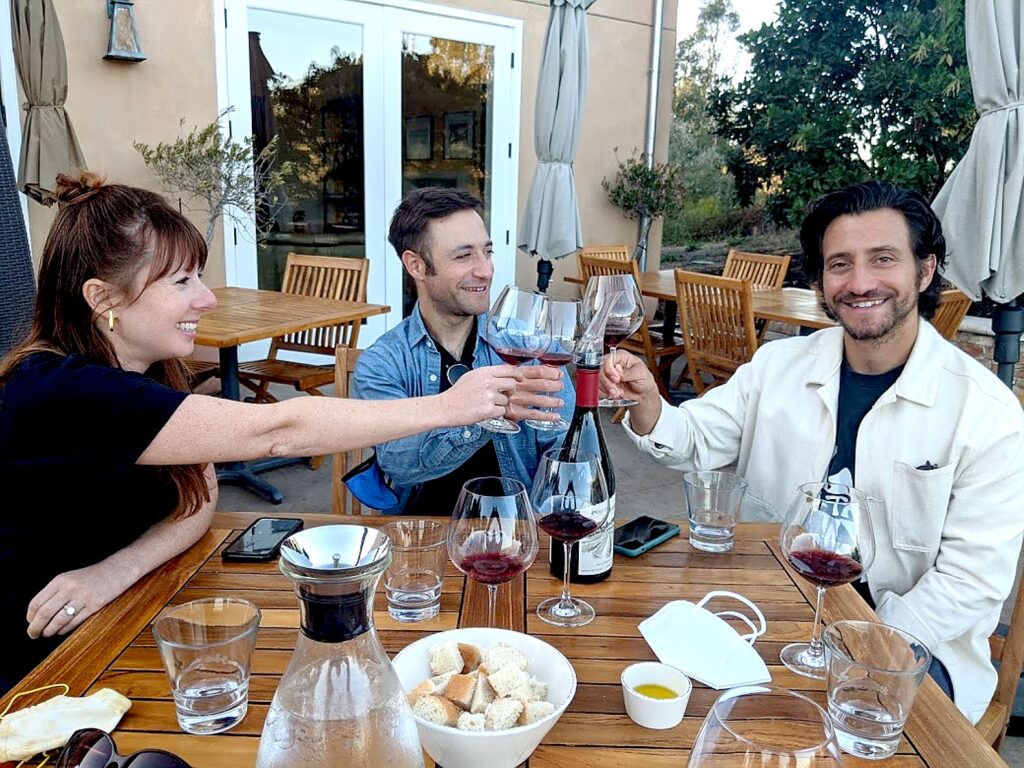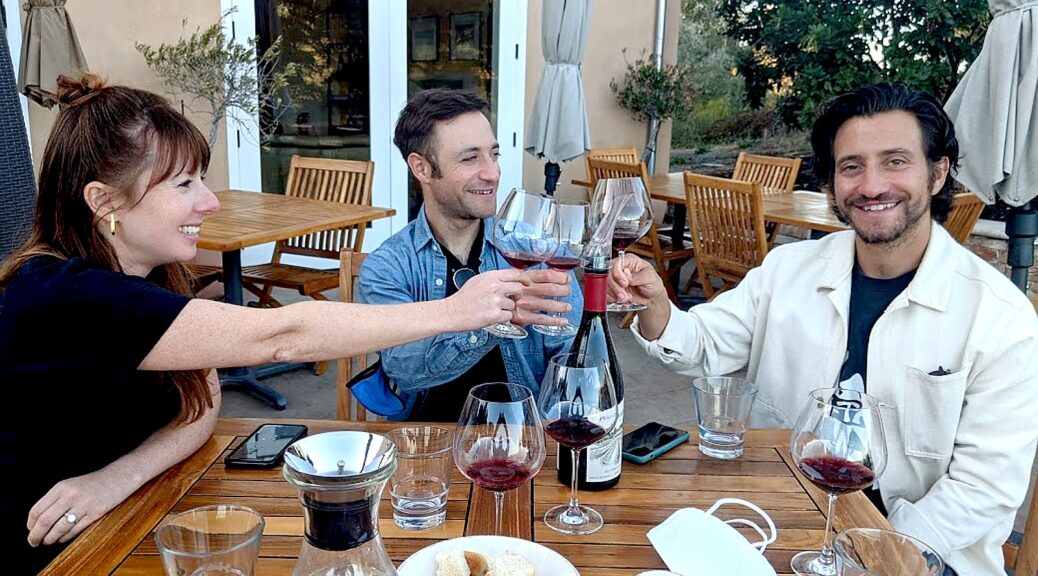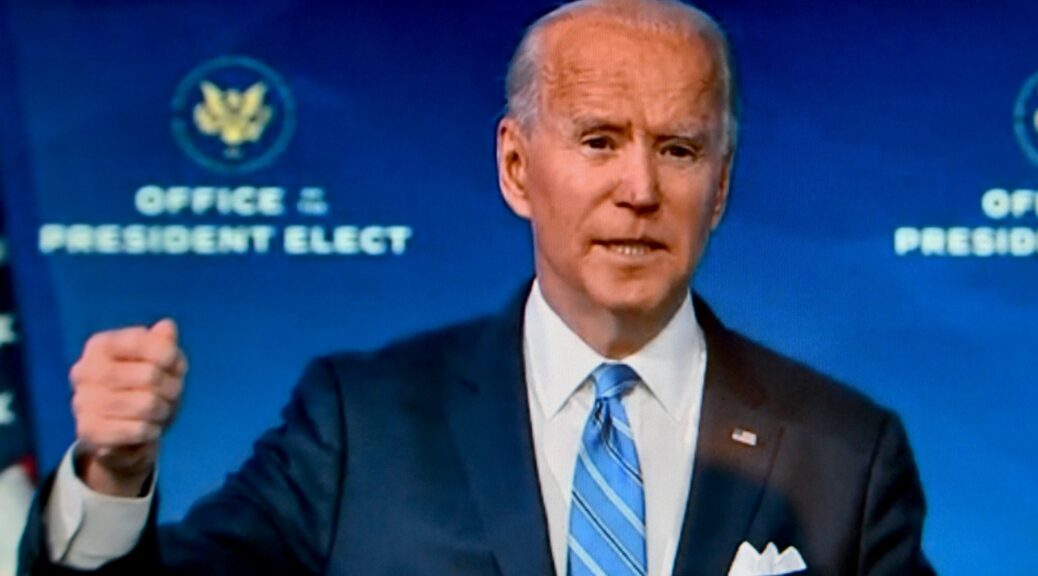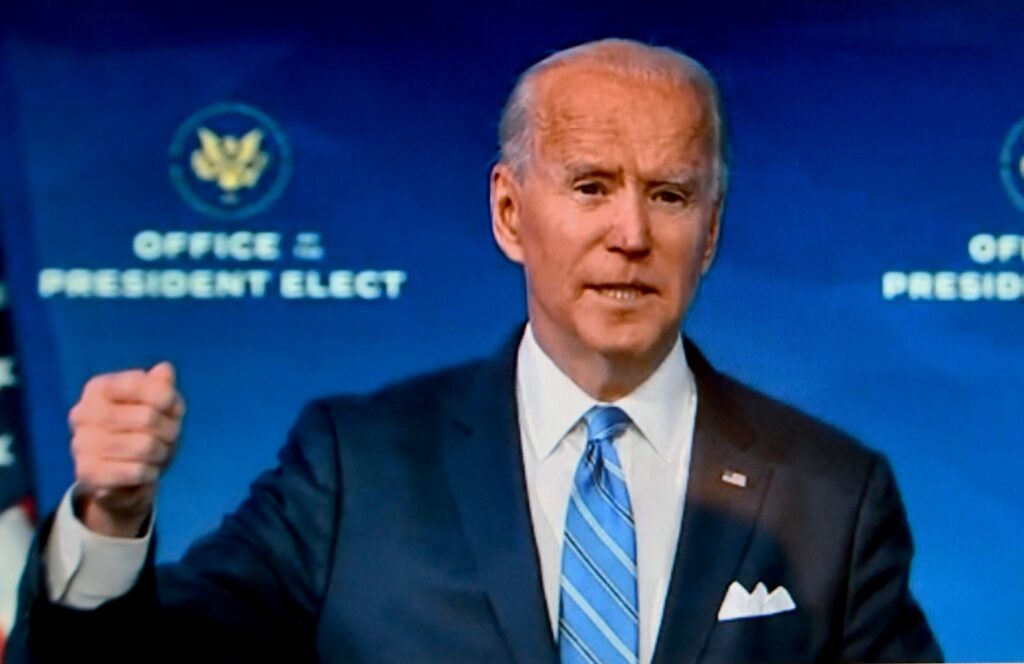
President Joe Biden is calling for June to be a “Month of Action” – a full-court press to reach the goal of 70 percent of Americans vaccinated against COVID-19 by July 4th. He outlined the unprecedented peacetime effort to make the vaccinations available for free, and even enticing incentives from governments, companies and sports organizations. New York State is awarding full four-year scholarships at a SUNY college; Ohio is picking $1 million lottery winners. The Biden Administration has created a website in order to find the nearest place to get a vaccination by texting your zipcode, organized free Uber lifts, free drop-in-day care and incentivized employers to give paid leave to get the shot.
“The more people we get vaccinated, the more success we’re going to have in our fight against this virus,” he said. “America is headed into the summer dramatically different from last year’s summer: a summer of freedom, a summer of joy, a summer of get-togethers and celebrations. An all-American summer that this country deserves after a long, long, dark winter that we’ve all endured.”
Here are his remarks:
In just four months, thanks to the American people, we have made incredible progress getting people vaccinated quickly, efficiently, and equitably. Nearly 170 million Americans of every party, every background, every walk of life have stepped up, rolled up their sleeves, and gotten the shot.
Fifty-two percent of adults are now fully vaccinated, including seventy-five percent of all seniors. Twenty-eight states and the District of Columbia have achieved 50 percent of adults being fully vaccinated in their jurisdictions.
And it’s clearer than ever: The more people we get vaccinated, the more success we’re going to have in our fight against this virus.
Since January 20 — and we’re talking, now, about 15 [5] months — the average daily cases are down from 184,000 to 19,000, below 20,000 for the first time since March of 2020. Average hospitalizations are down from 117,000 to 21,000. Death rates are down over 85 percent.
And this didn’t just happen by chance. We got to this moment because we took aggressive action from day one with a whole-of-government response. We used every lever at our disposal to get this done.
We experienced the production and expanded it in a significant way: in lifesaving vaccines available for every single American. They’re available, and we knew that was the case months ago.
We worked with cities and states to create over 80,000 vaccination sites. We deployed over 9,000 federal staff, including 5,100 active-duty troops to help get shots in arms. Now, as a result, we have built a world-class vaccination program.
I promised you we’d marshal a wartime effort to defeat this virus, and that’s just what we’ve been doing.
And now, tens of millions of Americans have been vaccinated. They’re able to return to closer to a — closer-to-normal life.
Fully vaccinated people are safely shedding their masks and greeting one another with a smile. Grandparents are hugging their grandkids again. Small-business owners are reopening storefronts and restaurants.
Because of the vaccination strategy, our economic strategy, we’re — experienced the strongest economic recovery this country has seen in decades.
There is a group called the Organization of Economic Co-operation and Development — OECD — which includes most of the world’s largest economies in its membership. They’ve been one of those leading bodies analyzing economic growth across — around the world for 60 years.
Just this week, they increased their projection for the U.S. economic growth this year to 6.9 percent — 6.9 percent. That’s the fastest pace in nearly four decades. And that’s because of our vaccination program and our economic response, which, alone, are adding 3 to 4 percentage points to our growth; driving stronger growth not just there — not just this year, but in years to come.
In fact, America is the only major country where global forecasters have actually increased their five-year forecasts for economic growth since January of 2020.
And because of that, America is headed into the summer dramatically different from last year’s summer: a summer of freedom, a summer of joy, a summer of get-togethers and celebrations. An all-American summer that this country deserves after a long, long, dark winter that we’ve all endured.
But what happens after the summer? The data could not be clearer: For all the progress we’re making as a country, if you are unvaccinated, you are still at risk of getting seriously ill or dying, or spreading disease to others, especially when Americans spend more time indoors again, closely gathered in the fall, as — and as we face the potential threat of a new, more dangerous variants.
Even now, if you look at the areas of the country where vaccination rates are the highest, the death — the death rates are dramatically falling. They — the vaccines are effective; they’re effective against the variants currently circulating in the United States. On the other hand, COVID deaths are unchanged in many parts of our country that are lagging behind in vaccinations.
And for young people who may think this doesn’t affect you, listen up, please: This virus, even a mild case, can be with you for months. It will impact on your social life. It could have long-term implications for your health that we don’t even know about yet or fully understand yet.
It’s true that young people are much less likely to die from COVID. But if you do not get vaccinated, you could get COVID sooner or later. But you could get COVID still.
A substantial percentage of people with COVID, even young people, will suffer illnesses, and some will have long-term health impacts as a consequence.
If you’re thinking that the side effects from the shot are worse than the COVID, or that you can’t just take a chance, you are just dead wrong.
Do it for yourself. Do it to protect those more vulnerable than you: your friends, you family, your community.
You know, some people have questions about how quickly the vaccines were developed. They say they’ve been developed so quickly, they can’t be that good. Well, here’s what you need to know: Vaccines were developed over a decade of research in similar viruses, and they’ve gone through strict FDA clinical trials.
The bottom line is this — I promise you: They are safe. They are safe. And even more importantly, they’re extremely effective.
And if you’re vaccinated, you are protected. If you are not vaccinated, you are not protected.
Places with high vaccination rates will also see fewer cases of COVID moving forward. Places with lower vaccination rates are going to see more.
You know, we were elected to be President and Vice President for all Americans. And I don’t want to see the country that is already too divided become divided in a new way — between places where people live free from fear of COVID and places where, when the fall arrives, death and severe illnesses return.
The vaccine is free, it’s safe, and it’s effective. Getting the vaccine is not a partisan act. The science was done under Democratic and Republican administrations. Matter of fact, the first vaccines were authorized under a Republican President and widely developed by a Democratic President — deployed by a Democratic President.
All over the world, people are desperate to get a shot that every American can get at their neighborhood drug store at no cost, with no wait.
Every American over 12 years of age — no matter where you live, what you believe, who you voted for — has the right to get vaccinated. It’s your choice.
So, please, exercise your freedom, live without fear. We need to be one America, united — free from fear this fall.
Now, how will we keep beating this virus as we enter — as we enter the fall after summer? On May 4, I asked Americans to come together to get 70 percent of adults with one shot by July 4th — 70 percent at least with one shot. To date, 12 states have already reached this important milestone. We expect — we expect more to make this milestone this week.
Nationally, we are at 63 percent of adults with one shot. And we are getting closer, but we still have work to do. With 73 percent of Americans over the age of 40 with one shot, and as — we especially need people under 40 to step up. Over 40 is doing much better.
That’s why, today, we’re announcing a month-long effort to pull all the stops — all the stops to free ourselves from this virus and get to 70 percent of adult Americans vaccinated.
Now, I’m going to take everyone — you know, it’s going to take everyone — everyone — the federal government; the state governments; local, Tribal, and territorial governments; the private sector; and, most importantly, the American people — to get to the 70 percent mark so we can declare our independence from COVID-19 and free ourselves from the grip it has held over us — our lives for the better part of a year.
Each of you has the power to help us gain this freedom as a nation. If you get a shot this week, you can be fully vaccinated by July 4th — by the week of July the 4th. And you can celebrate Independence Day free from fear or worry.
This effort has five key parts. First, we’re making it easier than ever to get vaccinated. Ninety percent of you live within five miles of a vaccination site. The vaccinations are free, and most places allow walk-up vaccinations. No appointment needed.
You can go to Vaccines.gov or text your ZIP Code to 438829 to get a text back with the places you can get a shot that are close by.
And now, we’re going to make it even easier. In response to our call to action, businesses and organizations across the country have stepped up to help everyone get vaccinated.
Starting next week, many vaccination sites will be offering extended hours during the month of June, including pharmacies that will be open 24 hours every Friday night — for 24 hours they’ll be open — this month.
And if you’re too busy at work or school, you can get vaccinated around the clock on any Friday. Any Friday.
For parents who haven’t been able to get the shot because they didn’t have the childcare: Starting today, KinderCare, Learning Care Group, the Bright Horizons, alongside with hundreds of YMC- loc- — YMCA locations, are going to offer free drop-in childcare while the parents are getting vaccinated.
In addition, Uber and Lyft are both offering free rides to and from vaccination sites — vaccination centers. It’s easier than ever to get vaccinated.
So, again, text 438829 to find out what the nearest places you can get vaccinated are from your ZIP Code. And visit pharmacies with an extended-hour and walk-up shots that are available. Free childcare, free rides, free shots.
Second, we’re going to redouble our outreach and public education efforts. We’re going to relaunch them, in effect. We’re going to launch a national vaccination tour to encourage people to take the shot. The Vice President is going to lead that tour across the South and the Midwest, where we still had millions of people to vaccinate.
She’s going to be joined by Jill — by the First Lady and the Second Gentleman and Cabinet Secretaries along the way.
In the spirit of meeting people where they are, we’ll also be working with the Black Coalition Against COVID and other organizations to launch a new initiative called “Shots at the Shop.” Barbershops, beauty shops are hubs of activity and information in Black and brown communities in particular, but in many communities across the nation. Local barbers, stylists, they become key advocates for vaccinations in their communities, offering information to customers, booking appointments for them, even using their own businesses as vaccination sites. We’re going to work with shops across the country to make an even bigger impact over the next month.
We’ll also kick things off this weekend with a National Canvassing Weekend, where thousands of volunteers will be out knocking on doors and encourage their communities to get vaccinated.
And mayors — mayors will be stepping up even more over the next month and partnering with us on the City Vaccination Challenge to see which city can grow its vaccination rate the fastest — the most — by July 4th.
We need you to join these efforts. This is the kind of on-the-ground work that’s going to get the job done.
Third, we’ll be increasing our work with employers — employers. A lot of working people are holding back because they’re concerned about losing pay if they take time off to get a shot, or if they don’t feel well the next day. I’ve said before: For small- and medium-sized employers, if you give people paid time off to get a shot, you’ll get a tax credit to cover that cost.
Already, millions of workers across the country are eligible for paid time off and incentives from their employers. I’m asking all employers: Do the right thing.
And we’re making it easy for employers to set up on-the-job vaccination clinics to make it even more convenient for their employees to get a shot.
Fourth, we’re going to continue encouraging people to get vaccinated with incentives and fun rewards. The state of Ohio had a heck of a fun reward — a new millionaire last week — thanks to the creative idea of the governor for holding a vaccination — a vaccine lottery.
The grocery store, Kroger, announced that they’re going to give away $1 million each week to someone who gets vaccinated at one of their pharmacies.
The NBA, the NHL, NASCAR — NASCAR tracks — they’re offering vaccine- — vaccines outside playoff games and at races. Major League Baseball will be offering free tickets to people who get vaccinated at the ballpark.
And to top it off, Anheuser-Busch announced that beer is on them on July the 4th. That’s right, get a shot and have a beer. Free beer for everyone 21 years or over to celebrate the independence from the virus.
Fifth, and finally, we’re asking the American people to help. We need you. We need you to get your friends, family, neighbors, and coworkers vaccinated. Help them find an appointment. Drive them to the site. Talk to them about why you made the choice for yourself. So many Americans have already stepped up to help get their communities vaccinated.
And over the next month, we’re going to need you more than ever. We need every American to commit to the five actions I’ve mentioned this month.
Go to WeCanDoThis.HHS.gov — WeCanDoThis.HHS.gov — to sign up to volunteer and learn more about how you can help.
Take at least five actions to help in June. And you might even be invited to visit us at the White House in July to celebrate independence together.
I’ll close with this: We need everyone across the country to pull together to get us over the finish line. I promise you we can do this. Just look at what we’ve already done — we’ve already accomplished together in only four months.
We know it for a fact: Americans could do anything when we do it together. So, please, do your part. Give it your all through July the 4th. Let’s reach our 70 percent goal. Let’s go into the summer freer and safer. Let’s celebrate a truly historic Independence Day.
“The more people we get vaccinated, the more success we’re going to have in our fight against this virus,” he said. “America is headed into the summer dramatically different from last year’s summer: a summer of freedom, a summer of joy, a summer of get-togethers and celebrations. An all-American summer that this country deserves after a long, long, dark winter that we’ve all endured.”





